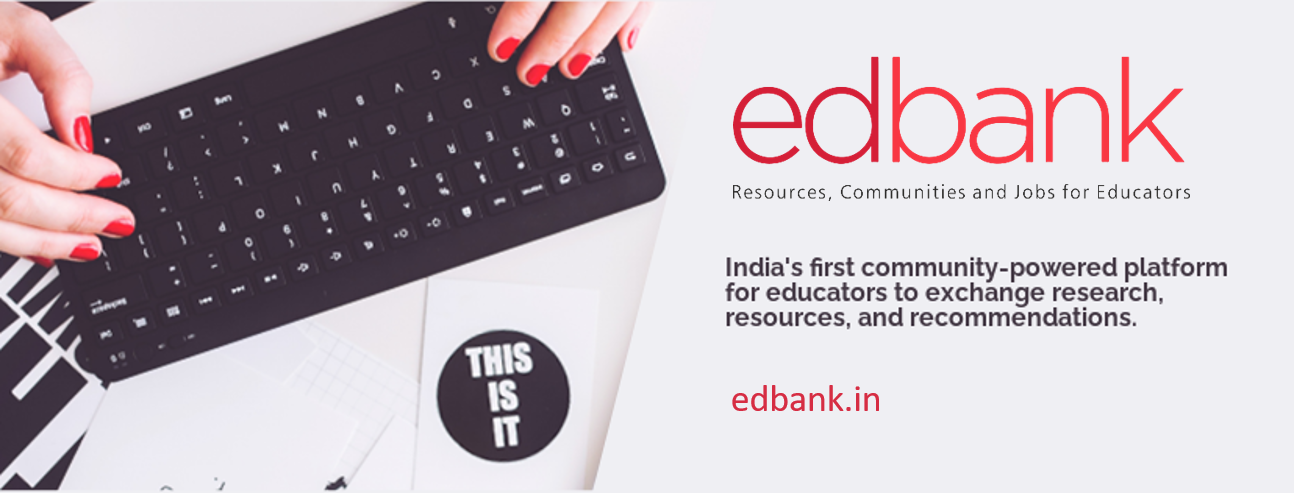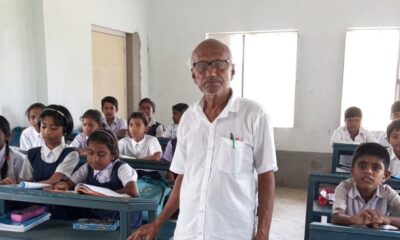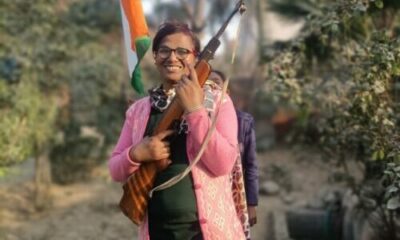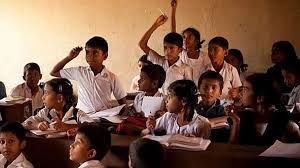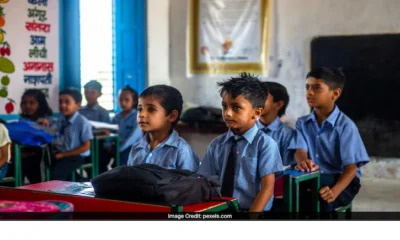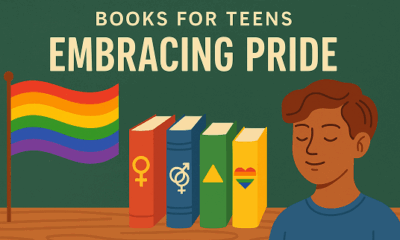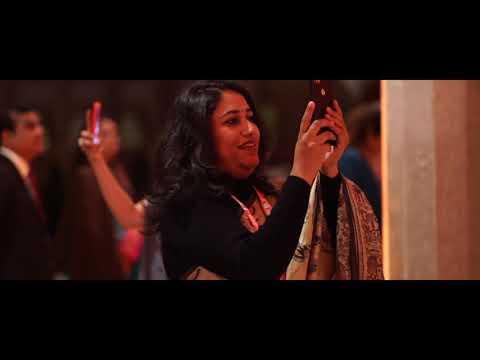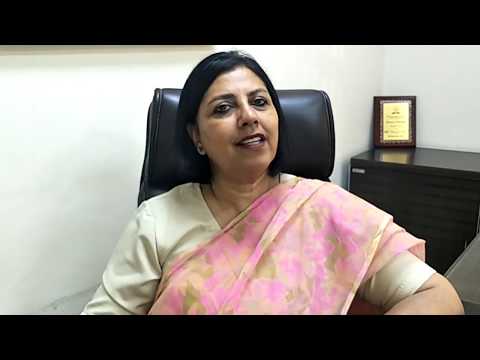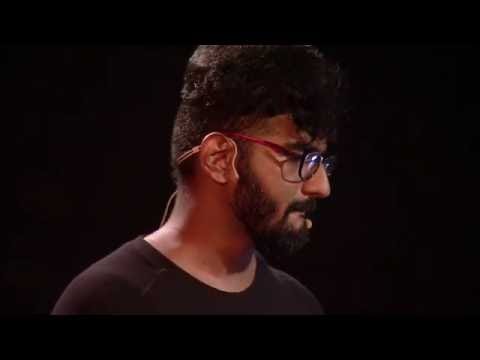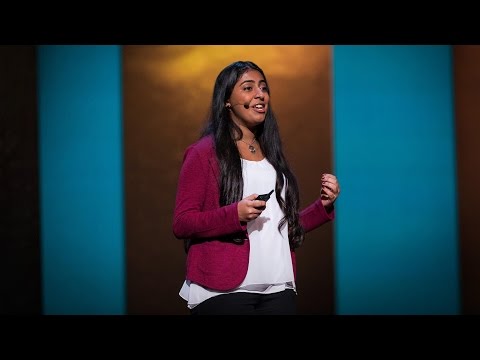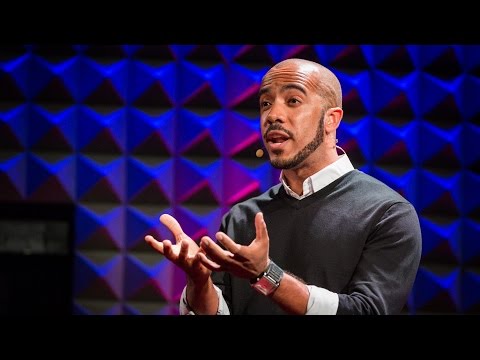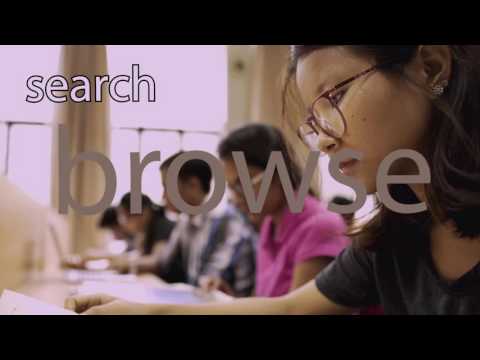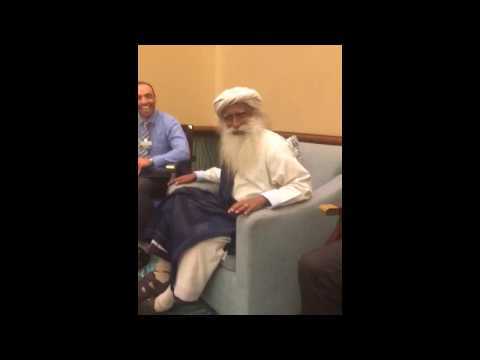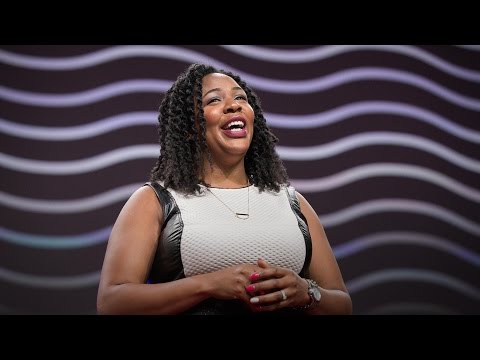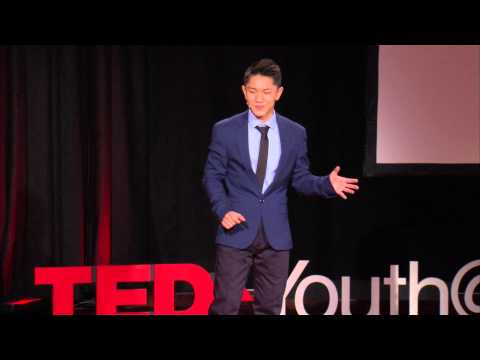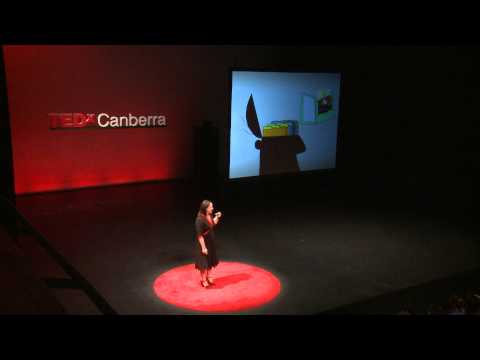ScooReviews
Stay Home & Read These COVID-19 Publications by WHO
Here’s a reading list of e-books by WHO especially during the Corona outbreak.

My Hero is You (Storybook For Children on COVID-19)
This book was a project developed by the Inter-Agency Standing Committee Reference Group on Mental Health and Psychosocial Support in Emergency Settings (IASC MHPSS RG). The project was supported by global, regional and country-based experts from Member Agencies of the IASC MHPSS RG, in addition to parents, caregivers, teachers and children in 104 countries. A global survey was distributed in Arabic, English, Italian, French and Spanish to assess children’s mental health and psychosocial needs during the COVID-19 outbreak.
COVID-19: 24/7 Parenting
This page provides open-access online parenting resources during COVID-19 on one-on-one time, keeping it positive, structured up, bad behaviour, keep calm and manage stress, and talking about COVID-19. These resources, available in 30+ languages, were developed by Parenting for Lifelong Health, who are working with WHO, UNICEF, the Global Partnership to End Violence Against Children, the Internet of Good Things, USAID and Centers for Disease Control and Prevention.
https://www.covid19parenting.com/
Remote Psychological First Aid During The COVID-19 Outbreak

Psychological first aid is a method of helping people in distress so they feel calm and supported to cope better with their challenges. It is a way of assisting someone to manage their situation and make informed decisions. It involves paying attention to reactions, active listening and, if needed, practical assistance, such as problem-solving, help to access basic needs or referring to further options for assistance. These interim guidelines can be used by Red Cross Red Crescent National Societies to set up and run different kinds of remote services for the public during the time of a COVID-19 response, noting that the target group for the guidelines are adults.
Mental Health And Psychosocial Consideration During COVID-19 Outbreak
In March 2020, WHO made the assessment that COVID-19 can be characterized as a pandemic. WHO and public health authorities around the world are acting to contain the COVID-19 outbreak. However, this time of crisis is generating stress in the population. These mental health considerations were developed by the WHO’s Department of Mental Health and Substance Use as messages targeting different groups to support mental and psychosocial well-being during the COVID-19 outbreak.
Interim Briefing on Note Addressing Mental Health And Psychosocial Aspects of COVID-19 Outbreak

This interim briefing note was developed by the Inter-Agency Standing Committee (IASC) Reference Group for Mental Health and Psychosocial Support in Emergency Settings and summarizes key mental health and psychosocial support (MHPSS) considerations in relation to the 2019 novel Coronavirus (COVID-19) outbreak. The Reference Group consists of more than 30 members, and fosters a unique collaboration between NGOs, UN and international agencies and academics, promoting best practices in MHPSS.
Source: http://www.emro.who.int/mnh/publications/mental-health-support-during-covid-19.html?format=html
Image Courtesy: Pixabay
Education
John King’s Book ‘Teacher By Teacher’: A Global Tribute to the Transformative Power of Education
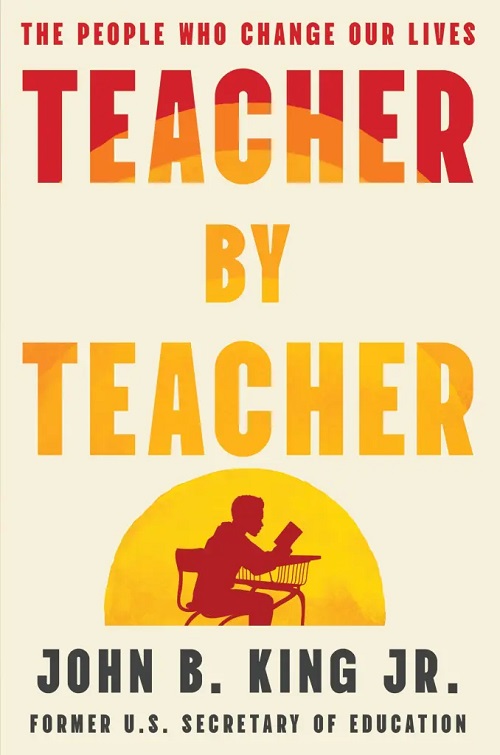
For John B. King Jr., former U.S. Secretary of Education, school wasn’t just a place—it was a lifeline. In his newly released memoir, Teacher By Teacher: The People Who Change Our Lives, King traces his journey from a grief-stricken child in New York to the corridors of educational leadership in Washington, D.C. But while the book is rooted in the American educational experience, its messages about the impact of teachers resonate far beyond U.S. borders.
In an exclusive interview with Education Week’s Sam Mallon on May 5, 2025, King reflected on his memoir, the teachers who shaped his life, and the ongoing challenges educators face worldwide.
A Childhood Saved by Teachers
King’s story is a testament to the power of mentorship. Following the death of his mother and his father’s battle with Alzheimer’s, school became King’s sanctuary. “Teachers saved my life,” he shared, recalling how educators believed in him, nurtured his potential, and gave him hope even when the world outside seemed dark.
From those formative years, King went on to earn degrees from Harvard, Columbia, and Yale. His career as a teacher, school principal, education policymaker, and eventually, U.S. Secretary of Education became a journey of giving back. The memoir celebrates not only King’s personal resilience but the quiet heroism of teachers everywhere.
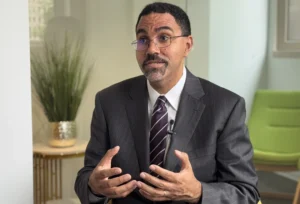
Former Secretary of U.S Education John King. Image Source- EducationWeek
While King’s book is anchored in American education, the messages it carries are universally relevant. Teachers worldwide are grappling with challenges—overcrowded classrooms, mental health issues among students, and ever-changing education policies. In his interview with Education Week, King highlighted how schools must be more than academic factories. They must be safe havens, places of healing, and hubs of inspiration.
King advocates for “trauma-informed practice”—an approach where teachers are equipped to understand and support students facing emotional challenges. This is a lesson that transcends borders, as schools globally encounter rising mental health concerns among students.
Teacher Evaluations and Policy Pressures
King’s time as U.S. Secretary of Education was marked by ambitious reforms—from implementing the Every Student Succeeds Act (ESSA) to pushing for more rigorous teacher evaluation systems. But looking back, he acknowledges a key lesson: change cannot be forced without teacher buy-in.
“Teachers can’t be bombarded with reforms,” he explained. Change must be gradual, and educators must feel a sense of ownership over new policies.
King’s narrative is ultimately about hope. In his memoir, he shares how a single teacher’s encouragement can change a student’s life trajectory. He recalls how his father’s legacy as New York’s first Black deputy schools chief was kept alive by a former student who, years later, shared how impactful his father’s teaching was.
Teaching is more than a job—it is a calling. It is a force for social good, a platform for mentorship, and a means to nurture the next generation of thinkers, leaders, and dreamers. King’s Teacher By Teacher is a reminder that educators everywhere have the power to transform lives, often without even knowing it.
Though written from an American perspective, Teacher By Teacher is a love letter to educators everywhere. It is a call to support teachers, to understand the pressures they face, and to recognise the life-changing impact they can have on their students.
For a world that often takes teachers for granted, John King’s memoir is a reminder of the heroes who stand at the front of every classroom, ready to make a difference.
Excerpts referenced in this article were taken from John King's exclusive interview with Education Week on May 5, 2025, in Washington, conducted by Sam Mallon for Education Week.
Edutainment
Navigating Teen Emotions: The Essential Lessons of ‘Inside Out’
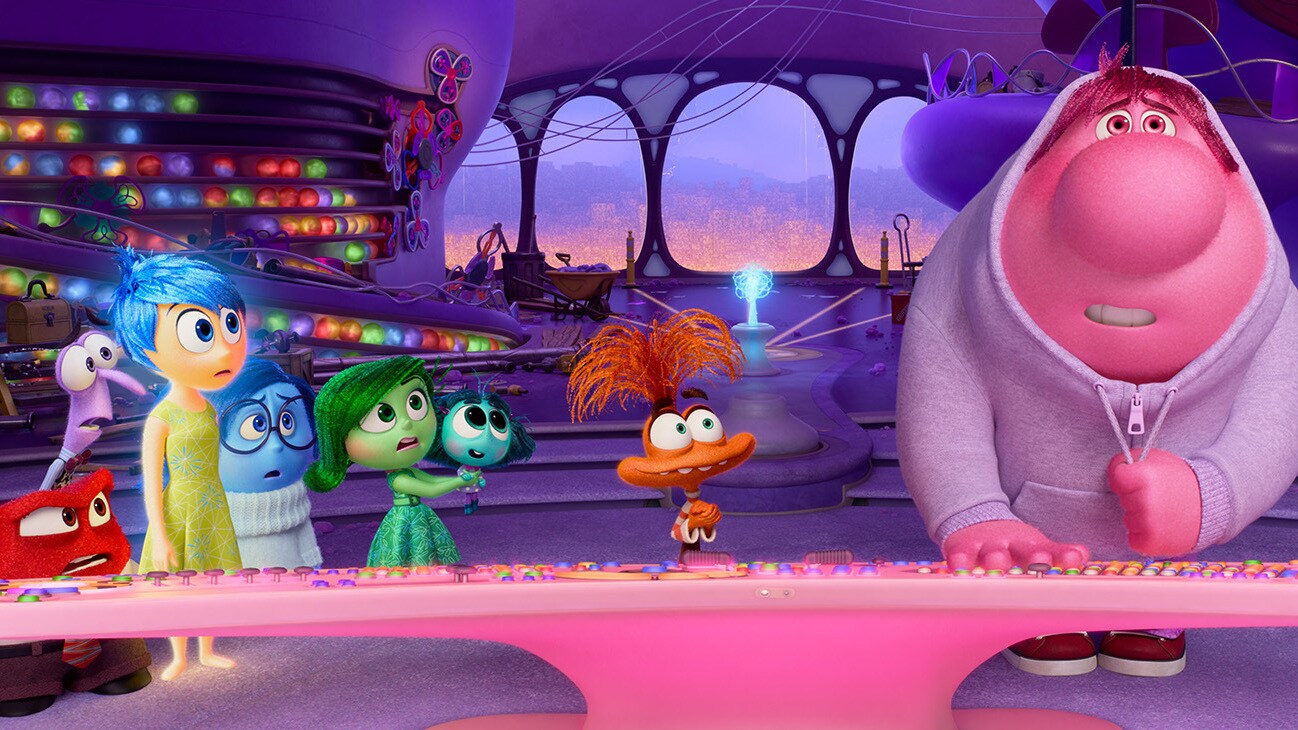
Amongst all other animated movies, ‘Inside Out’ not only stands out due to its new way of telling stories but also for its profound study into the human mind. It was a 2015 release from Pixar Animation Studios that looked at emotions in a very complicated manner, focusing on how an 11-year-old girl called Riley operates internally. As I saw the sequel “Inside Out 2,” in a theatre full of parents, kids, and young adults, it is important to revisit what we learnt in the original film and why it should be watched by teenagers and their parents.
“Inside Out” personifies five primary emotions: Joy, Sadness, Anger, Fear and Disgust. These are the characters that walk with Riley through life’s difficulties especially after her family moved to another city. This movie ingeniously demonstrates this emotional rollercoaster which accompanies such major changes making it relatable for children as well as adults.” Inside Out” helps adolescents who often cope with multiple emotional issues identify and understand that they are real.
Teenagers usually feel overwhelmed by growing up’s flood of emotions. The transformations accompanying the shift from childhood to adolescence are generally confusing and hard to express in words. “Inside Out” addresses these changes by showing that it’s normal to experience a wide range of emotions, sometimes all at once. Riley’s journey teaches teenagers that it’s okay to feel Joy, Sadness, Anger, Fear, and Disgust; these emotions are all part of the human experience.
Among the most touching messages of the film is that one must accept all the emotional states, not only positive ones. Joy, at first, tries to put Sadness aside and believes Riley should always be happy. Eventually however Joy realizes Sadness is vital for Riley’s emotional health. This could be a great revelation for teenagers who are mostly pressured to maintain an image of being ever-happy. “Inside Out” teaches them that it’s okay to feel sad and that acknowledging and expressing this emotion is a crucial part of emotional well-being.
As for parents, “Inside Out” serves as a gentle yet powerful reminder on why empathy and open communication are important in parenting. With our curriculum known for its single-minded commitment towards good grades and high moral standards, mental health has often been pushed aside. This movie indicates that one way of doing this is by understanding the children’s emotions’ needs. Parents can watch Inside out with an aim of learning how they can create an atmosphere where their children will have freedom to express themselves without fear.
The characters’ interactions in Riley’s mind might help parents understand how complex their teenager’s emotional world can be sometimes. As soon as they see that each emotion contributes to Riley’s overall wellbeing, parents may grow more patient and empathetic toward their children’s emotional struggles. This understanding is pivotal in nurturing a child’s emotional health and building a strong, supportive relationship.
“Inside Out 2,” introduces new emotions like Anxiety, Envy, Ennui, and Embarrassment, and makes it clear that the emotional landscape becomes more intricate as children grow into teenagers. The sequel delves deeper into the emotional challenges that accompany adolescence. A memorable scene from the upcoming film features Anxiety taking over from Joy, emphasising the need for more sophisticated emotions to navigate Riley’s more complex life. This transition is a stark reminder that growing up is not just about physical changes but also about evolving emotional needs.
One of the critical aspects of “Inside Out” and its sequel is the portrayal of anxiety. In the sequel, Anxiety explains that Riley’s life now requires more sophisticated emotions. This portrayal can help teenagers and their parents understand that anxiety is not inherently bad. Instead, it’s a natural response to challenging situations. The film can be an essential tool in discussing mental health issues like panic attacks, which are often overlooked in Indian communities.
By presenting anxiety as a part of Riley’s emotional toolkit, “Inside Out 2” can teach teenagers to listen to their inner voice and reassure themselves that everything will be okay, even in difficult situations. This understanding can help them develop healthier coping mechanisms and reduce the stigma associated with anxiety and other mental health issues.
Inside Out is more than just an animated film; it serves as an important resource for teenagers and parents alike. It allows viewers to have a nuanced understanding of emotions; stresses on embracing all feelings and assists them in becoming empathetic as well as encourages open communication. Now that Inside Out 2 has been released and is currently running at theaters across the country, this may be a good time to take the kids to watch the film or to revisit the original movie so that our kids and their guardians can watch it.
Inspiration
The Liberal Gift: The Key Lessons from “College – Pathways of Possibilities” by Saikat Majumdar
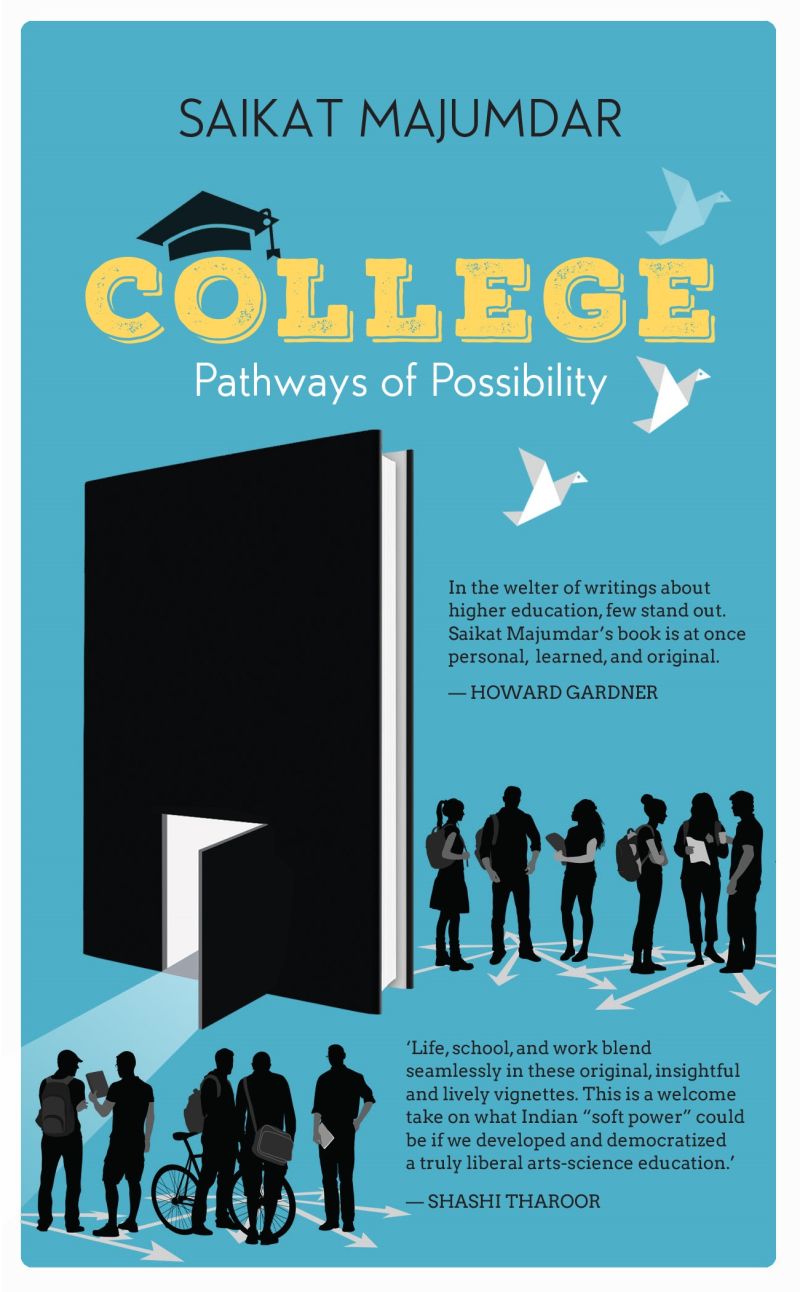
Children up to grade VI who secured a rank within the top 15 were exempted from sitting for the annual exam at the school I attended. My academic performance was below average, so I never missed writing the annual exam. During classes, I struggled to learn the notes by rote; instead, I found myself drawn to discussions and debates on the topics at hand. Unfortunately, the classroom environment rarely encouraged such interactions, with teachers predominantly delivering monologues rather than fostering open dialogue. I neither listened to the teacher’s dictation of the book nor dictated the book in my answer scripts. As a result, my academic performance suffered, and I became accustomed to being identified solely by my exam marks.
Reflecting on this, I realized I was a curious mind asking questions, but since I was not meritorious, I often felt overlooked and misunderstood by both peers and parents. However, these challenges ultimately sparked a curiosity within me that transcended boundaries of traditional education. I discovered my passion for human interaction, leading me to pursue social work and later psychology. I specialize in the intersection of psychology and social work. Along the way, I realized that economics partly determines people’s behaviour in social contexts, which expanded my interest to include economics and a bit of history to understand the origins of human societies. This varied perspective was a burden to me until I read “College – Pathways of Possibilities” by Saikat Majumdar. The author’s discourse on education liberated my mind and soul, changing the course of my life. Through reading, I have come to realize that from the very start of my educational journey, I have been fervently seeking knowledge. However, when the expectation was to solely acquire information and reproduce it for marks, I struggled.
The book acknowledges my distinctiveness and is likely to do so for any reader. It is only fair if children who are natural learners are seen as individual persons functioning collectively for knowledge, with knowledge made available collectively. The author poses a radical question to the colonial system of education that is worshiped: Can fundamental arts and science education, or fundamental education per se, be imagined accommodating every individual? This is a magical question to me! I met some students today with whom I closely work on a Psychology student magazine. I asked them, in twelve long years of their school education and one year into undergrad, were they seeking knowledge or information. Their time paused for seconds, their pupils dilated, they looked at each other and collectively said, “Information!” Isn’t this true for most of us? When school and college students are confined within this rigid system that is not eclectically inherited and approached but rather coaches them to consume volumes of information, the nation buries thinkers, engineers mediocrity, instils low self-worth, and compromises their mental health. For a populous nation like ours, the scene is tragic!
This tragic outcome can be contained by opening our minds to the philosophy of liberal education, a luminescence elucidated by the author. The framework of liberal education, as described in the book, is a distribution model where inter-related related and contra-related disciplines speak to one another, offering new perspectives. Essentially, it is a framework that is less framework. This model of education provides the foundational work that allows for choosing a well-thought-out specialization. Specialization here is not about mastering a discipline but achieving a disciplinary depth that enables critical thinking and problem-solving. After all, problems in real life do not come to us specialization-centric. Do they? Even if they seem so, the solutions are seldom specialization-centric.
To cite an example I recently came across, a renowned architect mentioned in an interview the gap between architectural academia and practice. He said that architectural engineers fail to consider the impact of climate change in their designs, thus missing out on addressing architectural dangers. The gap the architect mentions is indeed alarming, and this gap can begin to close right in the classroom by cultivating a contra-disciplinary understanding.
Liberal education can assert the emergence of true well-being, ending the rat race of firsts and seconds in educational institutions. I take this determinative stance for many reasons, coming from the perspective shift the book has driven me to acknowledge.
Knowledge! Do we acquire it, experience it, or create it? I believe knowledge is a culmination of all these. The author says there are two sides to knowledge: one is the consumption of knowledge, and the other is the production of new knowledge. We are trapped in a colonial system of education that attempts to train us to consume information, and the quantity of consumption is scored, possibly creating an uninspiring relationship with the subjects, as it did for me. Information in education is crucial, but information alone is not education; it is merely a component. Knowledge, which is education, is crucial for a life of sustenance and progress. Sadly, the colonial-influenced Indian education system is producing aspirants of information, facts, and data alone.
In a conversation with the author, he highlighted how even aspirants cracking the Indian competitive exams such as CAT, JEE, etc., focus on facts and figures but fall short on knowledge that connects them to the real world. They reach only a certain point in their careers and life overall, then lose themselves. These aspirants are supposedly the intelligent bunch, so what is the lacuna? This applies to anyone who is an active part of this education system. This broadens the vision to something primal. While information learned within a syllabus is vital, it alone does not suffice to thrive. After a certain stage, there is no syllabus handed over. It is knowledge seeking that drives the human race towards individual and collective development and well-being. How is knowledge seeking cultivated and nurtured from a young age?
The focus here shifts from the consumption of information to the consumption of knowledge. But how is this achieved? The author emphasizes the power of big-think questions in classrooms. When students studying any discipline are guided to ask and are asked big-think questions, they engage in the fundamental spirit and methodology of the discipline, as mentioned in the chapter “The Souls of Disciplines.” To quote an example from the book, history, at its heart, is a narrative of people, groups, communities, and places in time, beyond mere information about specific historical periods. Unfortunately, this spirit is often silenced under the maze of facts and information that constitute the body of the discipline, the author contends.
When education drives a student to understand the epistemic form of the discipline, she will navigate her life well with her knowledge alone, with stealth and sensitivity, without needing to rely on a syllabus for support. Life with education begins with understanding the epistemic form of one’s primary discipline of interest and extends to drawing attraction to other disciplines, either interdisciplinary or contra-disciplinary. Reading about contra-disciplinarity can leave anyone amused! Can one imagine literature and computer science communicating? The friendship between the abstraction of literature and the concreteness of computer science is disruptive, and the author calls for it for a deeper sense of knowledge. Consumed in this way, knowledge transitions into the production of new knowledge at all stages of consumption. This makes education increasingly interesting, sustaining, evolving, and useful.
What resonated with me most was the author’s perspective on teaching questions and research questions. According to the author, no question is directionless. A question that lacks a definitive answer but stimulates the mind, ignites curiosity, and encourages deeper exploration into a paradigm is a teaching question. Such questions foster openness to various perspectives, acceptance of experiences, assimilation, and the consumption of knowledge. On the other hand, the counterpart of consumption is the production of new knowledge rooted in research questions studied empirically, theoretically, conceptually, and empathetically. Research allows for a deep relationship with knowledge and the process of scientific inquiry to produce new knowledge grants one a real agency. This process of questioning, learning, and constructing knowledge cultivates critical thinking grounded in knowledge. In essence, both the consumption and production of knowledge occur through questioning. When knowledge naturally flows between consumption and production, who better than students and teachers can move in and out and back and forth? This affirms the truth that education involves lifelong consumption and production of knowledge.
The book also reflects the reality, empathizes with the plight, and identifies the aspirations of a teacher-researcher trapped in a college constrained by the Indian university system of college operations. As a professor caught between the desire to lead oneself and counterparts with knowledge and piles of files, reading the book broke the silence. Bringing change to this system requires individuals, institutions, and policies to unlearn and relearn, marking the onset of a liberal mindset for liberal education. However, it only takes openness to begin this change in my classroom.
To conclude and commence, I borrow the author’s words, “Whatever the how, here’s the now.”
Authored By-
Swathi Priya D,
Assistant Professor (Psychology),
Kumaraguru College of Liberal Arts and Science
Inspiration
Hidden Figures: A Film Every Student Should Watch and Why

In the vast tapestry of cinematic storytelling, few films carry the weight of transforming our understanding of history and the unsung heroes within it quite like “Hidden Figures.” This masterpiece not only unfolds the extraordinary tale of three African-American women who were pivotal to NASA’s success in the space race but also serves as a beacon of inspiration for students across the globe. As the world recently celebrated the International Day of Women and Girls in Science on 11th February, it is imperative to delve into why “Hidden Figures” is a must-watch for every student.
“Hidden Figures” brings to light the incredible journey of Katherine Johnson, Dorothy Vaughan, and Mary Jackson, portrayed with compelling depth by Taraji P. Henson, Octavia Spencer, and Janelle Monae, respectively. These brilliant minds overcame the dual hurdles of racial and gender bias to lay the groundwork for John Glenn’s historic orbit around Earth. Their story is not just a chapter of NASA’s triumphs but a testament to the indomitable spirit of those who dare to dream big and defy societal constraints.
For students, “Hidden Figures” is much more than a history lesson; it is an exploration of the values of perseverance, integrity, and teamwork. The film adeptly captures the essence of these values, showing that success is not the reserve of a privileged few but achievable by anyone with the talent and determination, regardless of their background. This is the story of three strong women who are independent, making a way of their own in a time where people do not even believe that NASA hires women and that too women of colour. When they ask for what they deserve, they are frowned upon and rejected. They are expected to know what their place is and what is the way to look like a white person. Still, these women thrive. Today, the situation has improved for better but our students should understand what it took for the trailblazers and women like these three to bring the world where it is today.
The narrative rhythm of “Hidden Figures” mirrors that of an underdog story, making it relatable and engaging for a younger audience. It offers a linear and steady progression, showcasing the personal and professional challenges these women faced, their initial setbacks, and their ultimate triumph. Furthermore, the film’s emphasis on education and intellectual prowess as tools for breaking barriers is a critical takeaway for students. It highlights the importance of STEM (Science, Technology, Engineering, and Mathematics) education and the role it plays in shaping the future. “Hidden Figures” demonstrates that knowledge and skill are powerful agents of change, encouraging students to pursue their interests in these fields with zeal.
The film does not shy away from the harsh realities of the era it depicts but chooses to focus on the triumph of intellect and determination over discrimination and adversity. This balanced storytelling approach makes “Hidden Figures” an educational tool that transcends the classroom, imparting lessons of equality, respect, and the pursuit of excellence.
Hidden Figures is more than just a film; it is a catalyst for change, inspiring students to recognize and challenge the societal limitations placed upon them. It encourages a deeper appreciation for the contributions of women and minorities in science and technology, urging a more inclusive recognition of achievement in these fields. For these reasons and more, it is a film that every student should watch, serving as a reminder that history is made by those who dare to believe in the possibility of the impossible.
Inspiration
10 Professional Development Books Teachers Can Read with a Kindle Unlimited subscription
Here are 10 of our favorite books for teachers that are available to read for free with a Kindle Unlimited subscription (right now).

Kindle Unlimited is a monthly subscription that offers unlimited access to over 2 million digital titles including popular novels, new releases, magazine subscriptions, and more.
Teachers can access Kindle Unlimited’s books, magazines, and audiobooks on any device — you don’t need to own a Kindle. Download the books on your phone, tablet, or computer and access up to 10 titles at a time.
Kindle Unlimited is free for the first month and costs Rs. 169 per month after your free trial ends. Click here to check out Kindle Unlimited.
Here are 10 of our favorite books for teachers that are available to read for free with a Kindle Unlimited subscription (right now).
Why Don’t Students Like School?
Why Don’t Students Like School?: A Cognitive Scientist Answers Questions About How the Mind Works and What It Means for the Classroom (2nd Edition) by Daniel T. Willingham turns his research on the biological and cognitive basis of learning into workable teaching techniques. This is a valuable resource for both veteran and novice teachers, teachers-in-training, and for principals, administrators, and staff development.
Virus vs. the Internet
Virus vs. the Internet: A practical handbook for schooling during and after the pandemic by Prof. Sugata Mitra is for parents, teachers, educators, and people interested in children and learning. It is a practical and usable handbook of 15 ideas that will help you to enable children to learn, at home, at school, or virtually over the Internet. These ideas are developed from Prof. Mitra’s work over the last 22 years on how and what children can learn by themselves.
How To Talk So Little Kids Will Listen
How To Talk So Little Kids Will Listen: A Survival Guide to Life with Children Ages 2-7 by Joanna Faber deals with struggles familiar to every parent, relative, teacher, and childminder. How do you respond to a toddler who won’t brush his teeth? The preschooler who pinches the baby? The child who throws everything she can reach?
Organized according to everyday challenges and conflicts, and including real-life examples and the series’ trademark cartoons, this book is a survival manual of communication tools, including a chapter that addresses the special needs of children with sensory processing or autism spectrum disorders.
Design Your Mind
Design Your Mind: Everyday Tools to Make Every Day Better by B.W. Cribb is a guide to mastering your mind – to boost creativity, improve decision-making, enhance happiness, authenticity, and reduce stress. Backed by 30 years of involvement in sensory biology and behaviour, science communication, and a lifetime of experience with the weird and wonderful, BW Cribb empowers us with new ways of thinking and being.
Introducing Artificial Intelligence
Introducing Artificial Intelligence: A Graphic Guide 4th Edition by Henry Brighton & Howard Selina is an illustrated introduction to this fascinating area of science.
The Essentials of Vedic Mathematics
The Essentials Of Vedic Mathematics is a book that shows you how to master Vedic mathematics independently, without the help of an expert. The book is designed in such a way that it is useful and understandable to a wide audience.
Introducing Psychology
Introducing Psychology: A Graphic Guide 4th Edition is an illustrated introduction to the main “schools” of thought and the sections within psychology including Introspection, Biopsychology, Psychoanalysis, Behaviourism, Comparative (Animal) Psychology, Cognitive Approaches (including the Gestalt movement), Social Psychology, Developmental Psychology, and Humanism. The key figures covered include Freud, Pavlov, Skinner, Bandura, Piaget, Bowlby, Maslow, and Rogers, as well as many lesser-known but important psychologists.
How to Win Friends and Influence People
How to Win Friends and Influence People by Dale Carnegie is a well-researched and comprehensive guide that will help you through these everyday problems and make success look easier. You can learn to expand your social circle, polish your skill set, find ways to put forward your thoughts more clearly and build mental strength to counter all hurdles that you may come across on the path to success.
The Hole in the Wall
The “Hole in the wall” experiment of 1999, where a computer connected to the internet was embedded into a wall in a slum in New Delhi is well known. This is a new and updated edition of Prof. Sugata Mitra’s work between 1999 and 2021. The Covid-19 pandemic, having all but destroyed the existing and decaying system of education from the past centuries, created an intense interest in the ability of children to take charge of their own learning. The hole in the wall was now appearing in every home. This book contains the entire text of the original book as well as an update to subsequent work.
Rumi’s Little Book of Life
Translated by Marayam H Mafi & Azima Melita Kolin, Rumi’s Little Book of Life is a beautiful collection of 196 poems by Rumi, previously unavailable in English. Translated by native Persian speakers, this collection will appeal to Rumi lovers everywhere.
Hope this list helps. Please do comment and help us and our readers discover many more useful books that are available with Kindle Unlimited.
Please note the Kindle Unlimited collection is dynamic and the book availability changes with time.
ScooReviews
Empower Students and Recognise Skills with Classroom Badges
Classroom badges are essentially Digital badges that make learning fun and engaging. The badge is given to the student once they successfully complete a task or exhibit remarkable skill.
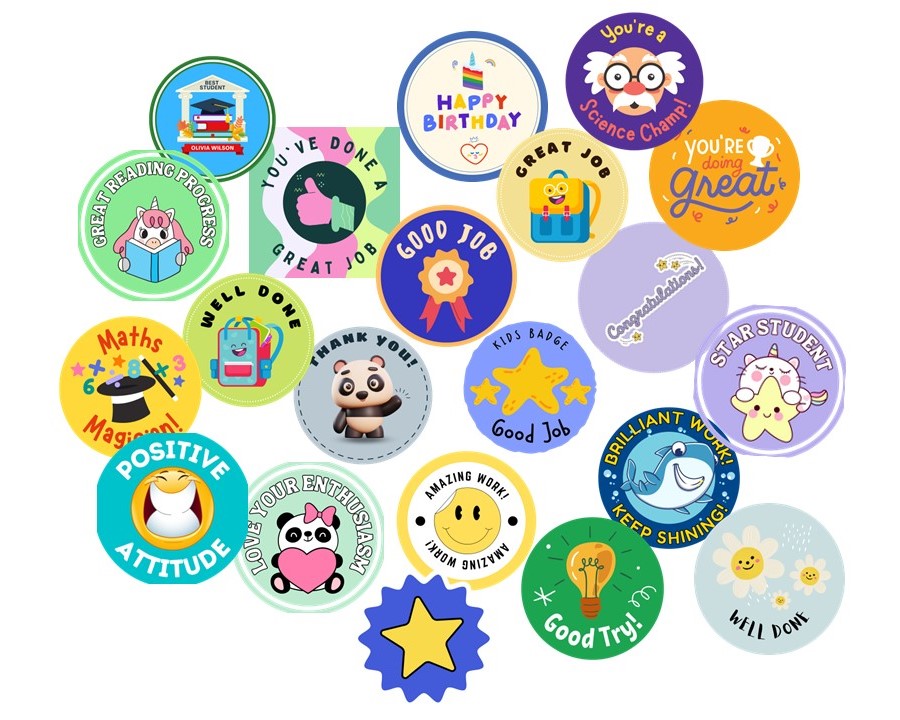
Presenting Classroom Badges
We believe in a child’s capacity to perform so much better than what the grades represent. And so, we’re on a mission to empower students and ensure they are acknowledged for all their efforts.
Classroom badges are essentially Digital badges that make learning fun and engaging. The badge is given to the student once they successfully complete a task or exhibit remarkable skill.
Students can promote their achievements with digital badges on a website, online portfolio, or social media platforms. Digital badges provide teachers the opportunity to recognize skills that aren’t frequently highlighted on report cards or transcripts, such as leadership, teamwork, citizenship, creativity, and innovation.
EDUCATION WITH BADGES PROMOTES:
- Learning in Chunks. Research has shown that knowledge is more easily retained when it’s organized into smaller, easier-to-digest chunks
- Personalized Learning. In our age of information technology, there is less time for personal instruction and more time for independent study.
- Quick Assessment. Unlike mid-term and end-term exams, badges have a faster turn-around to help a student get recognized for their efforts.
- Every student ends up getting recognized for their unique skill set and aptitude.
- Felicitating every milestone and every achievement over the course of learning motivates students to do better in their weak areas.
Additionally, there is a lot of merit in using badges from a longer-term perspective. Teachers, Parents, and Students alike stand to benefit from the badges. Following are the broad-level advantages that the badges have to offer:
Assistance to Teachers and Parents
- Teachers can keep track of improvements and findings concerning a child’s individual needs.
- Can decide future courses of action and improve weak areas.
- An assessment can motivate and inspire teachers and parents alike to take those achievements even further.
- Assist in carving long-term career paths
Bolster Personalized Learning
- Students can assess, and amplify their hard work in selective areas of learning
- Students can showcase their accomplishments and identify their strengths
- Encourage both students and teachers to constantly pursue higher goals
- Carve unique learning paths based on aptitude and micro-credits in the form of badges
Repository of Achievements
- Badges are for life. Participate in a wide range of learnings and assessments and keep digital proof of their performance.
- Share achievement with the wider world
- Present Achievement in many formats, for example on laptops or iPads
- Portability and can be saved and printed from any device.
BADGES WITH VALIDATEME:
ValidateMe.Online makes it simpler than ever to create and distribute digital badges. Digital badges can help us engage students. Learn what digital badges are, when to use them, and how to implement them in your classroom.
- Easy Creation, Bulk Issuance, and Management of Badges
- Immutable, Tamperproof, Secure
- Ease of sharing, Portable, Lifetime Repository
- Personalization, Build Profiles with Edulocker
- Easy Integration, API & Widgets, White labeling (soon), App (soon)
ValidateMe.Online is the most trusted and seamless end-to-end solution to create, issue, and manage digital credentials in just a few clicks.
ValidateMe’s blockchain-based digital certificates and badges make it possible for institutions to recognise students’ accomplishments, for individuals to demonstrate their skills, and for hiring managers to identify the most suitable candidates.
ScooReviews
My Good School – Where Passion Meets Education
A book for anyone and everyone associated with schools and schooling
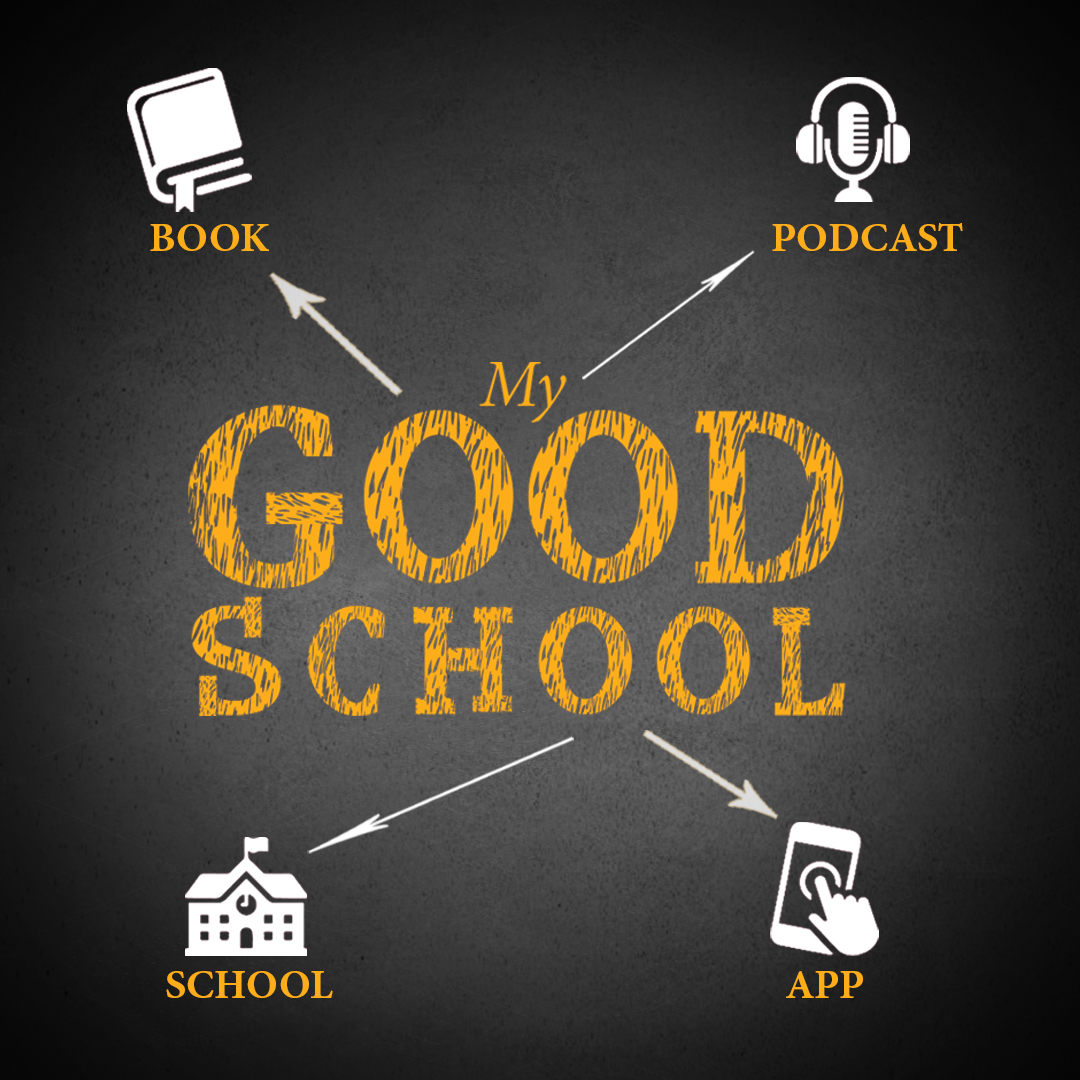
Does your school empower every individual?
If you are at school, we help you experience the joy of learning; for those who did not enjoy school, it is essential to realise that learning is natural for the brain. Just as the heart keeps beating as long as we live, the brain keeps learning.
At My Good School, children develop critical thinking and communication skills, preparing them to face the world. They experience values and virtues working with mentors and peers. #JoyOfLearning
Why should you join My Good School?
“Improves confidence in speaking, helps improve listening skills and reading fluency, teaches time management – balancing schoolwork and My Good School. JOL (Joy Of Learning) helps us in academics; we feel more confident while performing in a play or giving a speech. Everyone quickly finds the pleasure and joy of learning in an open, adaptable environment”. – Rishona Chopra, Grade 5 Gyanshree School
My Good School is Phygital (physical plus digital), a marketing term that combines digital experiences with physical ones. The GSA member Schools give equal emphasis to Service, Skill, Sport, and Study. We Focus on the 6 C’s: 1 Critical thinking; 2 Creativity; 3 Collaboration; 4 Communication; 5 Character; and 6 Citizenship. The ”My Good School” designation shows the school’s value on professional learning and student achievement.
Sunday School!
Experience the joy of reading, listening to heartwarming stories, and connecting with young people from schools worldwide —every Sunday in English and Hindi on Google Meet. The once-a-week school, 30 minutes open forum; 60 minutes English and 60 minutes Hindi, follow up on the Telegram App. The pure joy of learning, no compulsion to attend!
Joy Of Learning
The Joy Of Learning Program and the Sunday School is a much-loved innovation of the Learning Forward India Foundation; the foundation also has a well-established Internship Program, Space Program, Well-being Program, Sports Program, and a Happy Teachers Program.
Good Schools Alliance
Schools and stakeholders empower young people. Programs Partners and Members Schools collaborate for service, skill, sport, and study; add value to the school curriculum, and spread the joy of learning.
- Empower every individual at your school
- Encourages students to become involved in activities beyond just study; this helps develop confidence, knowledge, and networks.
- Experiential learning is a critical factor in progressing successfully through adolescence.
- Education empowers students by creating an environment for their personal and social development.
The story of My Good School started with the need for a balanced curriculum that ensured diversity, inclusion, and belonging for every child at The Fabindia School; the school emphasises a holistic approach to education, offering extensive extra-curricular programs along with comprehensive academic courses. Our focus on happy teachers and the joy of learning became a story in itself!
My Good School – the book, podcast, App, and school – give us a reason to celebrate the joy of learning and help us look at learning from every child’s perspective. Today, the learning process has become far more democratic, and the role of the teacher has evolved from one who provides knowledge to a person who co-creates learning for every individual, with the child at the epicentre.
The philosophy of My Good School gained global recognition with the publication of the book.
My Good School – Where Passion Meets Education was first published during the pandemic by Rupa Publications in 2021. This perhaps helped us all to look at a deeper understanding of a school, as the NEP 2022 has challenged the old style of teaching and learning. This book will help educators, school administrators, and management and will change the future of learning.

A BOOK FOR ANYONE AND EVERYONE ASSOCIATED WITH SCHOOLS AND SCHOOLING.
The book is for parents to select the school for their child, as the choice can have a lifelong impact on the child’s growth and personality.
A guide for you to look beyond that high-rise building and those perfectly manicured lawns—to go deeper in your search for your good school. It will encourage you to observe, question, evaluate, and choose a school that will truly prepare your child for a life beyond the campus, a life beyond theory.
This book will help educators, school administrators, and management build and rebuild such institutions and change the future of learning.
Enriched with the knowledge, experience, and, most importantly, the wisdom of The Doon School alumnus and school improvement coach Sandeep Dutt, this book will encourage conversations around our education system and help shape the future of education.
“This book is almost like a conversation where a concerned parent, a well-intentioned teacher, and an entrepreneur who is aware of the reality of education today discuss everything from the what, the why, and the how of teaching to what it will take to redefine education and learning.”
– Arvind Passey, Blogger, and columnist, The Education Post.
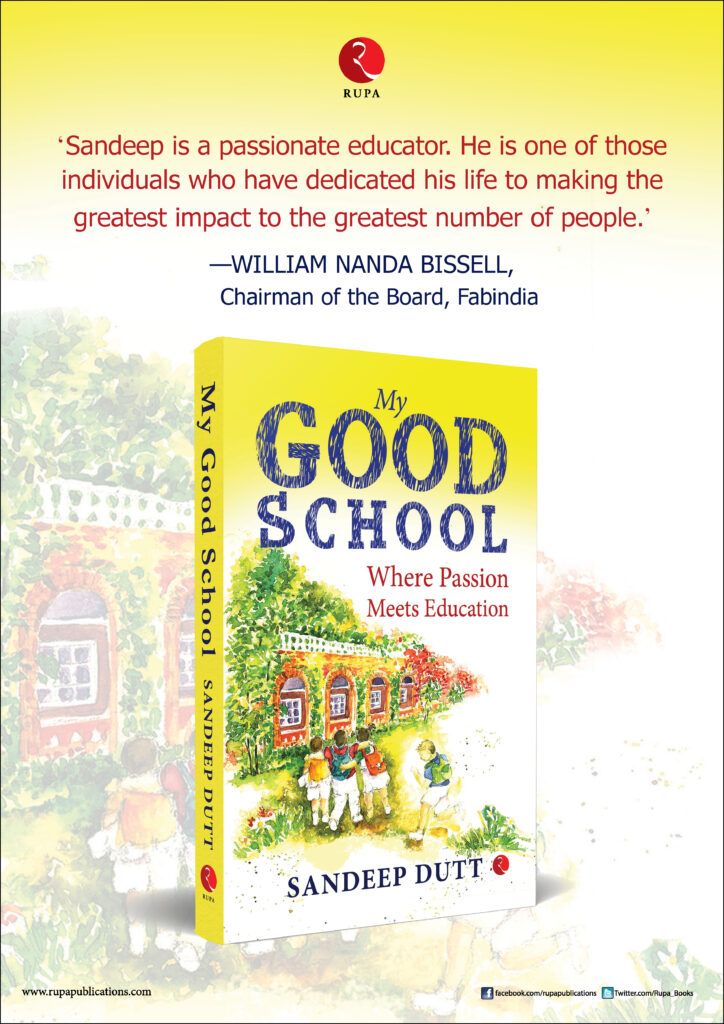
Listed in Top 10 Non-Fiction Bestsellers for 2021 by Booknerds.
Amazon lists the book in its list of top 100 non-fiction books.
At the Learning Forward India Foundation, passionate educators love to help schools deliver better, focusing on community learning programs for students and teachers to help take learning forward. You, too, can experience the joy of learning simply by enrolling at My Good School!
Find out more at www.SchoolEducation.com #MyGoodSchool #HappyTeachers #JoyOfLearning.
ScooReviews
India’s first, exclusive k -10 child safety school program – Hapchi is building an informed and resilient generation
Hapchi is a safety awareness and skill development organisation that aims to empower children 3 – 16 years against threats of abuse, bullying, cybercrime, and mental health issues
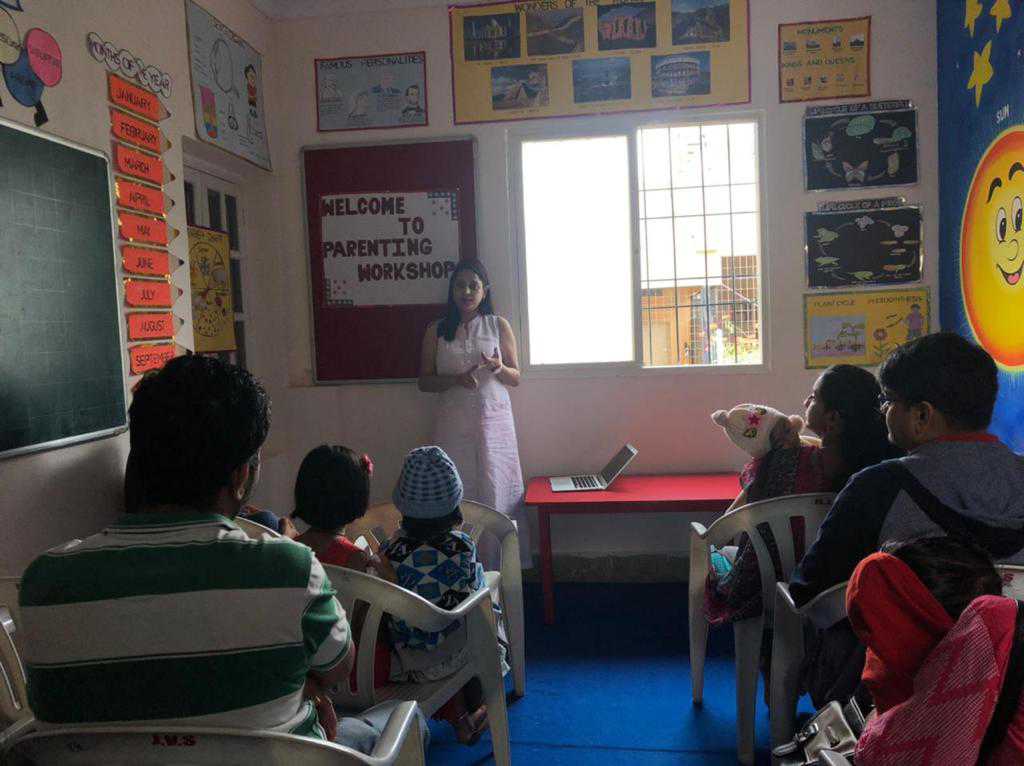
Ever wondered how your school can successfully address child safety concerns? If so, then look no further than HAPCHI!
"We live in a world where the understanding about child safety is restricted to good touch and bad touch and where rising instances of bullying and mental health issues are still being swept under the carpet. The current generation is maturing much earlier than its predecessors because of its exposure to technology. In today's environment, child safety is undermined at every stage of a child's life. It has therefore become essential to break down the barriers and begin discussing and destigmatizing these problems, now and no later. " – Dr. Kanika Sharma, Founder of Hapchi
HAPCHI, India’s first, revolutionary, and exclusive k -10 child safety school program, paves the way for an informed and resilient generation. It is a safety awareness and skill development organisation that aims to empower children 3 – 16 years against threats of abuse, bullying, cybercrime, and mental health issues. Our curriculum is ingeniously designed, customizable, and approved by experts. It is centered around a school-going child and connects all the critical stakeholders of the child's education ecosystem, that is school, teachers, and parents.
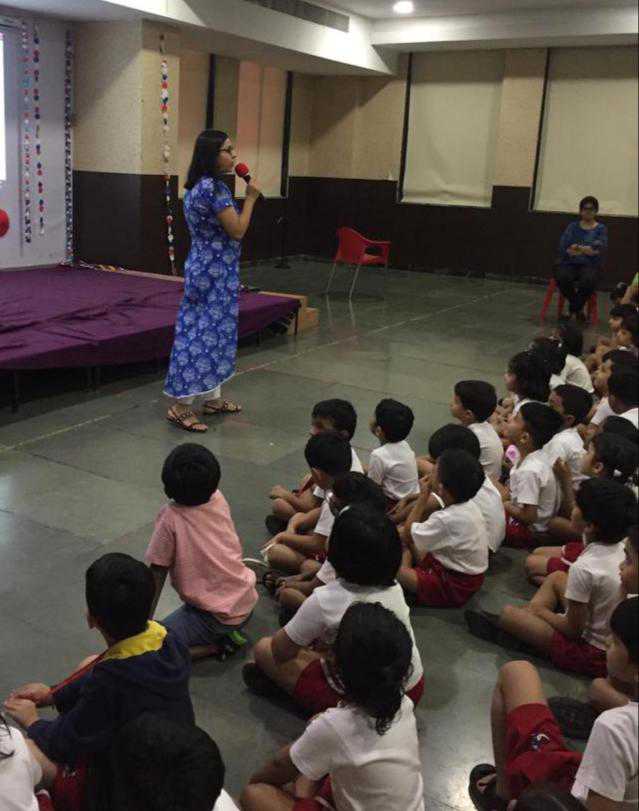
What sets Hapchi apart is that we create an environment that empowers children to openly discuss and express their issues without the fear of being judged. It helps kids realise that it's okay not to be okay, and allows them to empathise with the other's perspective. Along with learning about safety skills, real-life skills are also developed. It is a journey from innocent, vulnerable childhood to a happy, well-informed, and confident adulthood.
Along with schools, parents play a crucial role in empowering children to protect themselves. We also provide sessions for parents and educators to help them understand the child's perspective and bridge the communication gap. We believe that every child is unique and capable of reaching their full potential if they are raised in a nurturing environment.
“The best gift you can give any child is to empower them for life” – Dr. Kanika Sharma
ScooReviews
Dads, The PA In Parenting: A Book That Shatters All Stereotypes About Roles Of Fathers
Dr. Swati Popat Vats encouraged and guided sixteen fathers to tell their tales of fatherhood. This book is a compilation of stories from all walks of life. Read how these fathers manage to be involved parents in the 21st century and how their children are closer to them because of their efforts

Dads, the PA in Parenting, is a book by Scholastic and is supported by the Early Childhood Association (ECA), Association for Primary Education & Research (APER). It was compiled by Dr. Swati Popat Vats, who is a Parenting Mentor, President at ECA & APER, President, Podar Education Network, Founder/Director, Podar Jumbo Kids.
The book was launched during an online session that was headed by Dr. Vats and hosted twenty-one fathers, it was held a day prior to Father’s Day this year (2021).
Dads, the PA in Parenting is an assembly of stories, techniques, challenges, and happiness of fatherhood. This is the first time during the pandemic that sixteen fathers came together and wrote a book on parenting. This book challenges the time-long and socially accepted roles of mothers as the primary caregiver for children. Readers will find, fathers from different walks of life writing about several trials, solutions, and ways of nurturing their kids.
During the launch, Dr. Vats reminisced about the time when the idea of this book was not yet in existence. During a conversation with a dear friend, the actor Karanveer Bohra, she realised how society has discriminated in the roles of parents.

Karanveer writes in the 'Forward' of the book, how being closer to his mother helped him develop motherly instincts. Why he decided that he will not be the kind of father who can not be seen spending time with his daughters or changing their nappies because that’s a “mother’s job.”
A sneak-peek into the book:
Anand Chawla is the Director of Information Technology at Podar Education Network and a father of two. In his heartfelt chapter, he writes about how parenting is not like a degree one may earn by attending college, rather a lifetime goes into learning how to become good parents, and sometimes even then, the parents end up feeling like underachievers.
Aneesh Popat, an award-winning chocolatier and founder of The Chocolatier is a father of a two-year-old daughter. He writes about the complexity of his daughter’s birth and how powerless he felt, he calls it his first lesson of being the PA in parenting.
Dr. Arunabh Singh, Director at Nehru World School, is a father of two daughters. He talks about the two most important things to do (according to him) for parents, especially fathers, is reading to your children and listening to them.
Bhavin Shah, CEO of Education World, father of a teen son, express how his son was the reason he could rediscover himself and realise his true potential.
Pratik Shah, Founder president of Anvil Foundation, father of two daughters. He shares a very true insight of being a parent of girls, he says how a father can show what a good relationship with a man looks like to his daughters.
Dr. Harshal Wagh, Medical Practitioner at Kokilaben Dhirubhai Ambani Hospital, a father of two daughters. He accepts being a young couple and expecting a child brought many parenting issues from day one of pregnancy. He rightfully says how children look up to their parents and everything that parents do or say can mould the kids in ways unfathomable.
Haripal Sonawat is a Scientist at TIFR, he is the father of a four-year-old daughter. This is a story of a father raising his daughter by himself in a society that maintains the presence of a mother is more significant. His daily routines and chores, the way he would explain to his daughter about his work and the importance of him being away for a while, and much more.
Husein Dohadwalla, International Educationist and a father to a boy. He pens a real feeling when educators who handle dozens of children have their own, they fall from the sky and realise it is a different ball game altogether.
Neeraj Jain, MD Scholastic, father of a teen daughter and pre-teen son. He shares a simple way fathers can be more involved in their kids’ lives. By being involved in their activities the parents can bond better with the kids and communicate effectively.
Pritam Kumar Agrawal, Founder-Director of Hello Kids Chain of Preschools & Riverstone Schools, father of a set of twins, a boy, and a girl. He writes about the entire day, how it beings and what all happens during the time. His time is centered around his children, he writes how spending time with children is foremost important.
Ravi Santlani, CEO – ScooNews and a father of a girl and a boy. He talks about his relationship with his 15 year-old-daughter and 13-year-old son. He focused on the significance of communication between children and parents, be it a mother or a father.
Rushabh Turakhia, Author, Life Coach, Businessman, father of a seventeen-year-old son. His golden rule that he lives by as a dad is to remember that the children are not their parents, they have their own entity. What best parents can do is provide the best values, education, support, and trust the children to let them fly high.
Saurabh Kanwar, Co-Founder ATKT, father of a girl and a boy. In a hilarious way, he narrates how helpless and useless he felt as a new father, how he thought even nannies could do what he was doing. It took him a while to start feeling the actual place in parenthood, the PA in parenting.
Shobhan Soi, CEO Clay Preschools and Education Network, father of two boys. He expresses how boys tend to like mothers better, but being a super dad to his sons is a happy responsibility by choice for him and not a duty.
Vishnu Kartik, Inclusive Educationist, The Heritage Schools. He writes in his story, how he found out his premature-born daughter had Down’s Syndrome, the challenges said condition brought along; the way his two-year-old daughter taught him more compared to all the teaching in the world.
Ankeet Dave, Founder Access Life, father to a nine-year-old son. In a funny narration, he tells about the bro code and friendship a father and son share. He also shares how his son was the reason behind the inception of the NGO.
From toddlers to teens, from endearing and hilarious stories to adorable pictures, the book has it all. It concludes with ‘Tips for fathers’ which is a completely subjective view of how a father is handling certain situations.
This book can be bought in hard copies and will soon be available in e-format, according to Scholastic. Grab a copy, here.
ScooReviews
Book Review Of ‘The Reflective Practitioner: How Professionals Think In Action’
A guest review of the book by D.A Schon, Professor at MIT who developed the concept of ’Reflective Practice’ and further contributed to the theory of ’Organizational learning’
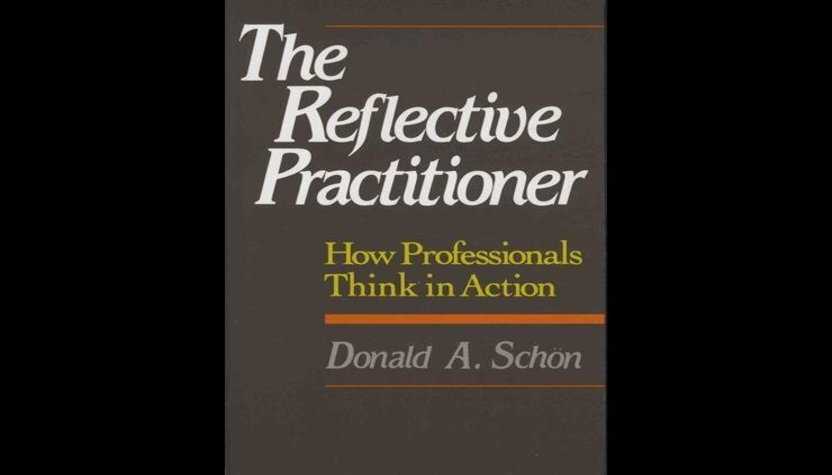
The epoch-making book, 'The Reflective Practitioner: How Professionals Think In Action' by D. A Schön (1983), is a work in which the author advocates a revolutionary shift from formalism to the study of experience. There was no other work other than this that revolutionised educational practices greatly since the first thought of reflection had come from John Dewey in 1933. Presenting the concept, Dewey described how reflection could help an individual to develop thinking and learning skills. He defined reflection as, “the active, persistent and careful consideration of any belief or supposed form of knowledge in the light of the grounds that support it and the further consideration to which it tends” (Dewey, 1933, p 9).
Schön’s work is divided into three parts in ten chapters. Part 1 consists of two chapters, titled 'Professional Knowledge and Reflection in Action'. The first chapter casts doubts about traditional ways of understanding professional knowledge. The second one recognises the traditional with 'technical rationality' and moves to the unconventional view of 'reflection in action'. Part 2, titled 'Professional Contexts for Reflection in Action', takes the book's lion share with 7 seven chapters dedicated to the part. The author uses a series of case studies in five different professions to elaborate on his idea of 'reflection in action'. Architecture, Psychotherapy, Engineering, Town Planning and Management are the represented fields. Part 3, the concluding part, is a single chapter in which he considers the professional implications of 'reflection in action'.
As an educational Professional, my takeaways lie in the second part. Each case study begins with an account of the intellectual history of the represented fields. The emphasis of the case studies is a kind of particular, personalised account of professional problems. Schön presents an architecture and a psychotherapy case in chapters 3 and 4, which culminate into a theoretical study of the structure of 'reflection in action' in chapter 5. The case studies do not have any theoretical base and the participants were not looking for a theory; neither they were looking for a standard solution for any problem. They were trying to resolve a particular and unique problem instead. The author highlights these facts and makes interesting observations which make sense in his 'turned around' perception on practice and practitioner thought. He writes, "Through the unintended effects of action, the situation talks back. The practitioner, reflecting on this back-talk, may find new meanings in the situation which lead him to a new reframing" (Schön P.135). The idea of a situation 'talking back' in answer to reflective and thought questions is continuously presented in the book. His theory is repeatedly referred to in case incidents that develop "accounts for artistry in situations of uniqueness and uncertainty" (Schön P.165). This contradicts the traditional technical rationality.
More case studies are presented in chapters 6, 7 and 8 with the same pattern. Part 2 is concluded in Chapter 9, in which Schön elaborates on the rudiments of the theory. He highlights the commonalities across the professions and, more importantly, the limits of the commonalities.
The book is a must read for all who take reflective practice seriously.

Author: Dr Venunadhan B. Pillai, Executive Principal, Vellore International School, Chennai
-
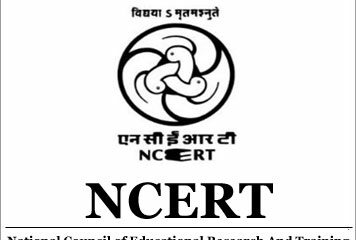
 Education3 months ago
Education3 months agoNCERT to Grant Equivalence to Class 10 and 12 Certificates Across Boards for Admissions and Jobs
-

 Education3 months ago
Education3 months agoClass 11 Student Navya Mrig on a Mission to Bust Myths About Organ Donation
-

 Education3 months ago
Education3 months agoSupreme Court Calls for Early Sex Education in Schools: “Not from Class IX, But from a Younger Age”
-
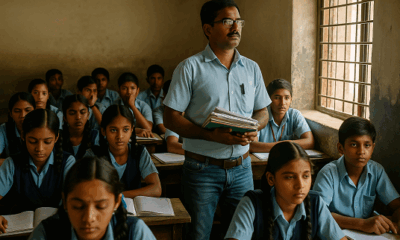
 Education3 months ago
Education3 months agoIndia Loves its Teachers, Just Not Enough to Pay Them: India Today Reports
-
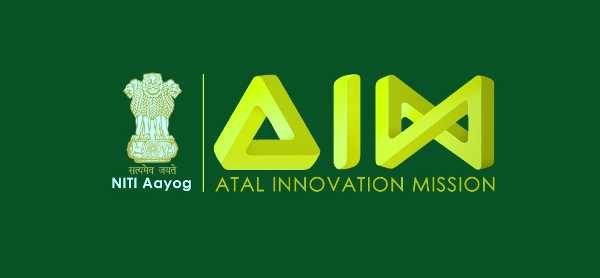
 Education3 months ago
Education3 months agoAtal Innovation Mission and IFCCI Join Hands to Scale Up Atal Tinkering Labs Across India
-
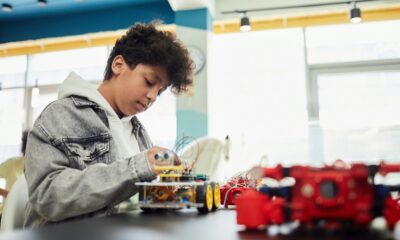
 Education3 months ago
Education3 months agoBeyond the Syllabus: School Teachers’ Insights on Project-Based Learning
-
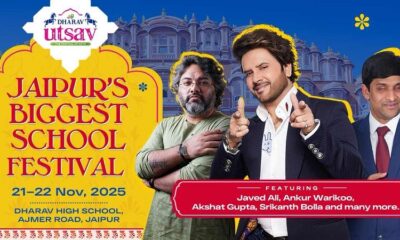
 Education2 months ago
Education2 months agoDharav Utsav to Celebrate Rajasthan’s Cultural Heritage and Local Talent
-

 Education3 months ago
Education3 months agoDelhi Government Launches Online First Aid Training Programme for Teachers
-

 Education3 months ago
Education3 months ago17-year-old Innovator Designs Learning Tools for the Visually Impaired
-
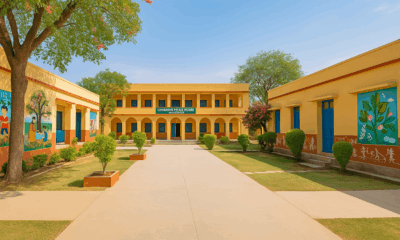
 Education3 months ago
Education3 months agoMinistry of Education to Promote Clean and Vibrant School Environments





